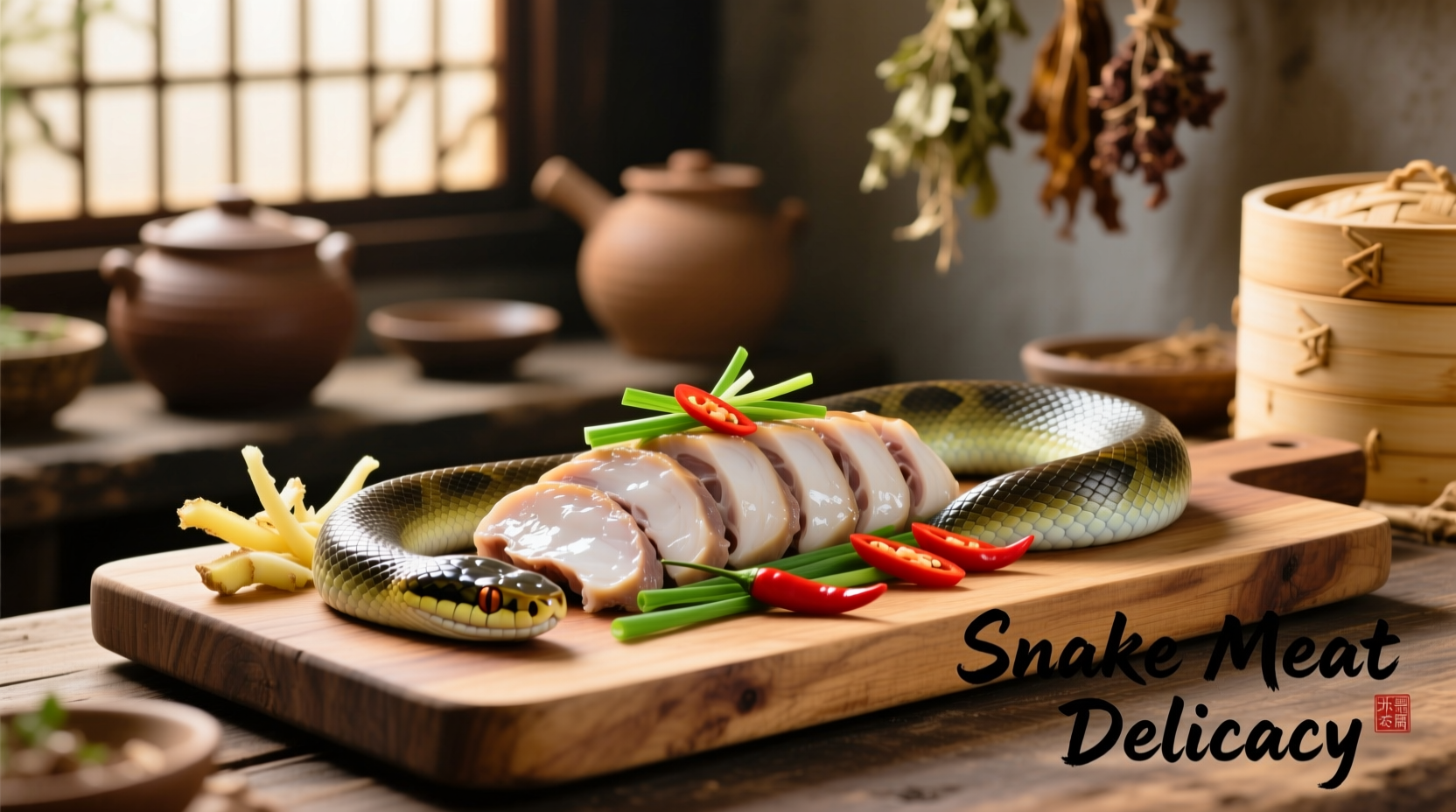Curious about exotic culinary experiences? You're not alone. Many adventurous eaters wonder what does snake taste like when considering this unconventional protein source. Based on documented culinary experiences and anthropological research, snake meat offers a unique flavor profile that varies significantly by species, habitat, and preparation method.
Understanding Snake as Food: Beyond the Hype
Before diving into flavor specifics, it's important to understand that snake consumption isn't just a daredevil stunt—it's a centuries-old practice with deep cultural roots. In many Asian countries, snake has been part of traditional cuisine for generations, valued both for its taste and perceived medicinal properties. The Chinese Academy of Sciences has documented snake consumption in southern China dating back to the Han Dynasty (206 BCE–220 CE), where it was considered a delicacy with purported health benefits.

Taste Profile Breakdown: What to Expect
When describing what does snake taste like, culinary experts consistently note several key characteristics:
- Texture: Tender and flaky, similar to chicken breast but with less fat content
- Base flavor: Mild and slightly sweet, often compared to quail or rabbit
- Aftertaste: Clean with minimal gaminess when properly prepared
- Mouthfeel: More delicate than poultry, with some species having a slightly gelatinous quality
| Snake Species | Flavor Profile | Texture | Common Preparation Methods |
|---|---|---|---|
| Rattlesnake | Mild, slightly fishy | Firm, similar to alligator | Fried, grilled, in stews |
| Python | Delicate, chicken-like | Tender, flaky | Stir-fried, in soups |
| Water Snake | Distinctly fishy | Soft, moist | Boiled, in medicinal broths |
| Cobra | Mild, slightly sweet | Firm yet tender | Wine-braised, in high-end restaurants |
Culinary Traditions Around the World
The question what does snake taste like can't be answered universally because preparation methods dramatically affect the final flavor. Different cultures have developed specialized techniques to maximize palatability:
Asian Culinary Traditions
In southern China and Vietnam, snake soup is a traditional dish often prepared with multiple snake species. According to research published in the Journal of Ethnic Foods, the Cantonese preparation involves simmering snake meat with herbs like ginseng and goji berries for several hours, creating a broth that's described as "rich yet delicate." The texture becomes remarkably tender through this slow-cooking process.
American Regional Practices
In the southern United States, particularly in Texas and Oklahoma, rattlesnake meat has been incorporated into regional cuisine since Native American times. Modern preparations often involve marinating the meat in buttermilk before frying, which helps neutralize any potential fishiness. The Oklahoma Department of Wildlife Conservation notes that rattlesnake roundups have evolved into cultural festivals where properly prepared snake is served as a local specialty.
Preparation Methods That Transform Flavor
How snake is prepared significantly impacts what does snake taste like. Professional chefs emphasize these key preparation principles:
- Proper skinning and cleaning: Essential to remove any musk glands that could impart undesirable flavors
- Marinating techniques: Acidic marinades (citrus, vinegar) help tenderize the lean meat
- Cooking temperature: Medium heat prevents the delicate meat from becoming tough
- Flavor pairings: Asian cuisines often use ginger and rice wine; American preparations favor cayenne and garlic
"The key to enjoying snake meat is understanding its delicate nature," explains Dr. Lin Mei, a food anthropologist at the University of Hong Kong. "Unlike beef or pork, snake has minimal fat content, so cooking methods must preserve moisture while enhancing its natural sweetness."
Safety and Ethical Considerations
Before seeking out snake meat, consider these important factors that affect both safety and flavor:
Species Selection Matters
Not all snakes are suitable for consumption. The Food and Agriculture Organization (FAO) of the United Nations recommends avoiding:
- Snakes from polluted waterways (potential mercury accumulation)
- Certain venomous species that may retain toxins in meat
- Protected or endangered species
Proper Preparation Is Critical
The Centers for Disease Control and Prevention (CDC) emphasizes that snake meat must be cooked to an internal temperature of 165°F (74°C) to eliminate potential parasites. Improperly prepared snake can carry Trichinella parasites, which cause trichinosis—a serious foodborne illness.
Sustainability Concerns
With increasing demand for exotic meats, some snake populations face pressure. The International Union for Conservation of Nature (IUCN) recommends choosing farmed snake meat over wild-caught when available, as sustainable farming practices help protect wild populations.
How to Try Snake Responsibly
If you're curious about what does snake taste like, here's how to approach it safely and respectfully:
- Seek established restaurants with expertise in exotic meats
- Ask about the snake's origin and preparation methods
- Start with small portions to assess your preference
- Consider trying in cultural context (e.g., at a traditional Chinese restaurant)
- Be aware of local regulations regarding exotic meat consumption
"The best introduction to snake meat is through traditional preparations," suggests culinary historian Lisa Chang. "When you experience it as part of its cultural context—with appropriate sides and preparation methods—you're more likely to appreciate its unique qualities rather than just focusing on the novelty."











 浙公网安备
33010002000092号
浙公网安备
33010002000092号 浙B2-20120091-4
浙B2-20120091-4